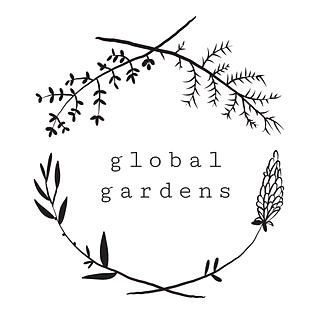EDICULTURE #6
- Global Gardens
- Jul 3, 2022
- 3 min read
Updated: Feb 24, 2023
By Abby Ellis
03/07.2022

Session six of our Ediculture course was once again (and for the final time!) held at Coed rural art space. Continuing from the theme of nutrition, we moved northwest in the wheel of the year to the theme of medicating and its effect on our bodies following ediculture principles.
An explorative tea ceremony
We started our session around the fire where we convened in a shared tea ceremony. To first engage signals of flavour and its effect within the body, we started with tasting hot water, experiencing its metallic taste and warmth. This concept of flavours and the cause and effect in the body is encountered in traditional Chinese medicine. The warmth of the water was calming, coursing up to our heads and down to our stomachs. We then widened the experience through engagement with a variety of herbal infusions and were invited to blindly taste each and guess what each was. Aromatics and astringents, such as Calendula and Catmint had the effect of engaging the nervous system by affecting the head, while Ground Ivy and Angelica root were aromatic and bitter, being good for stomach pain and the urinary system. Though at times the flavours presented as bitter and unusual. It was interesting to learn how they engaged with the body.
We also learnt about the zoning of flavours relating to the edibility of foods and herbs. Summarised in ediculture teachings to include sweet, salty, sour, pungent, and bitter.
Intuitive walking
We then set off into the wider rural space at Coed to engage with the plants on a more personal and physical level. We were led in silence and intuitively through the gardens and pathways up near the boundary fields and gardens. Both individually and in small groups, we were encouraged to directly speak with and respectively choose and acknowledge plants to work with on a long-term basis depending on personal needs and ailments. Setting off into fields, woodland, and garden to choose the plants without pressure to know their names or uses. A real assortment was encountered, including but not limited to, ferns, poppies, moss, and corn flowers. After reconvening we were invited to share our thoughts as to why we chose our respective plants. This included the evoking of childhood memories, multi-sensory experiences such as colour and texture, and the familiarity of plants which had been worked with before. This exercise allowed us to acknowledge plants on a personal, spiritual level linking feelings within our bodies to what appealed to us in the plants.
Herbal preparations
Our convening area was smudged with grounding Mugwort and Cedar, and for this afternoon portion of the session we focused discussion on herbal preparations, specifically tinctures. Herbal antibiotics, including a double extraction of Birch Polyvore mushroom, Myrrh resin in vegetable glycerine and Propolis were passed around. We had the opportunity of trying each and found the Propolis to be rather sweet in comparison to the more astringent examples. In terms of uses, we learnt how Birch Polyvore mushroom and the Myrrh resin work as an antiseptic for cuts and as an antibiotic, while propolis can be used for mouth abscesses. Being able to interact with these herbal medicines, who for some was a new experience, can be considered important in acknowledging different methods of medicating the body.
We also learnt the differences between Homeopathic treatments which theorises that like can cure like. Whereas Allopathic is arguably more intuitive and changes the body’s response to environment.
A final walk around
As our time at Coed drew to a close, we spent the last portion of our afternoon at the drying area. We encountered Plantain seeds that can be eaten as a sort of ‘superfood’ to improve digestion. As well as Horsetail that can be used to treat kidney problems. We then walked down to the herbal garden where we sampled tarragon, Lavender and Yarrow. Some of the group also took some Milk Thistle plants to care for at home.
With huge thanks to the National Lottery Community Fund in Wales for making this workshop possible.












Comments